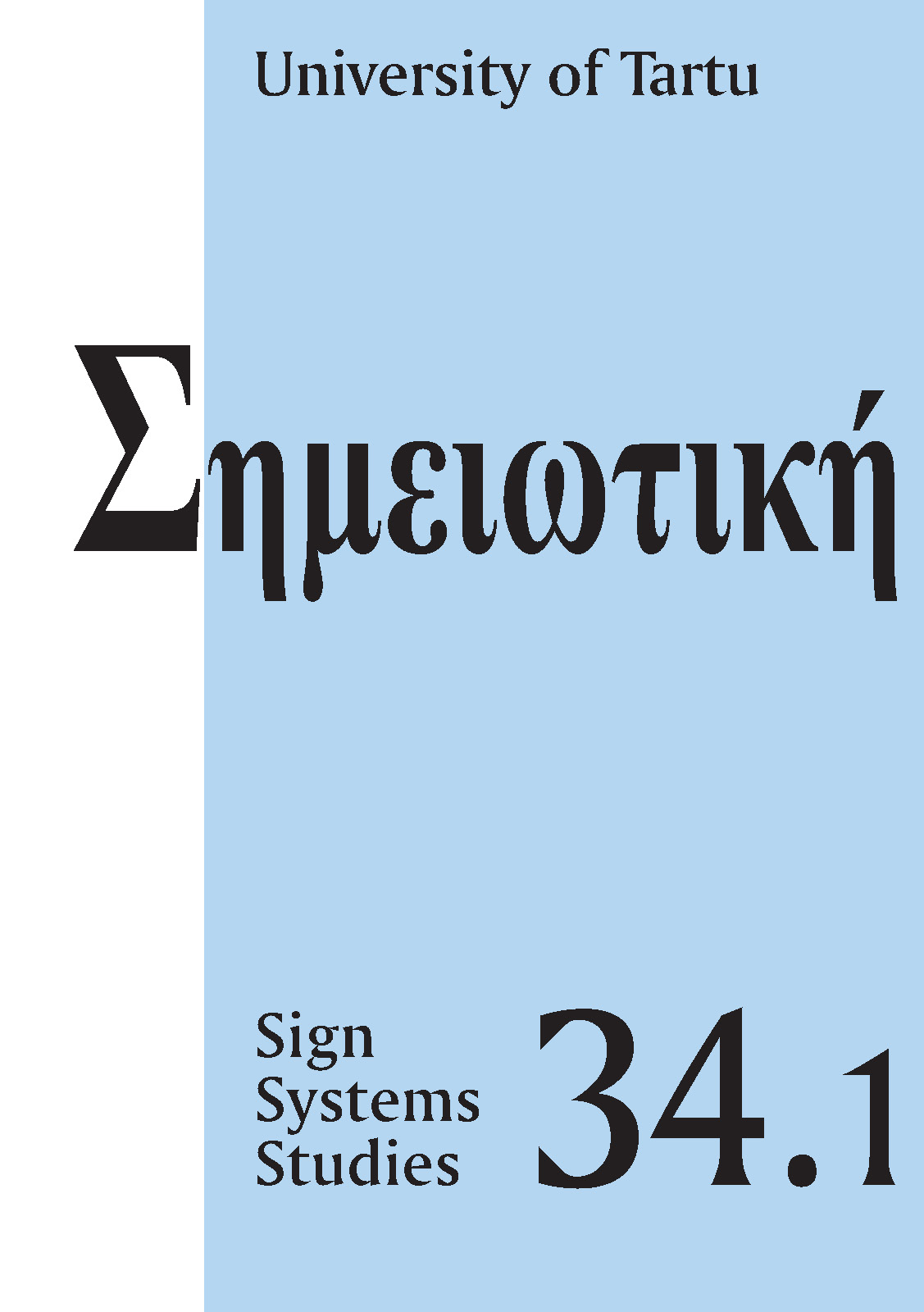The meaning of meaning in biology and cognitive science: A semiotic reconstruction
DOI:
https://doi.org/10.12697/SSS.2006.34.1.07Abstract
The present essay aims at integrating different concepts of meaning developed in semiotics, biology, and cognitive science, in a way that permits the formulation of issues involving evolution and development. The concept of sign in semiotics, just like the notion of representation in cognitive science, have either been used too broadly, or outright rejected. My earlier work on the notions of iconicity and pictoriality has forced me to spell out the taken-forgranted meaning of the sign concept, both in the Saussurean and the Peircean tradition. My work with the evolution and development of semiotic resources such as language, gesture, and pictures has proved the need of having recourse to a more specified concept of sign. To define the sign, I take as point of departure the notion of semiotic function (by Piaget), and the notion of appresentation (by Husserl). In the first part of this essay, I compare cognitive science and semiotics, in particular as far as the parallel concepts of representation and sign are concerned. The second part is concerned with what is probably the most important attempt to integrate cognitive science and semiotics that has been presented so far, The Symbolic Species, by Terrence Deacon. I criticize Deacon’s use of notions such as iconicity, indexicality, and symbolicity. I choose to separate the sign concept from the notions of iconicity, indexicality, and symbolicity, which only in combination with the sign give rise to icons, indices, and symbols, but which, beyond that, have other, more elemental, uses in the world of perception. In the third part, I discuss some ideas about meaning in biosemiotics, which I show not to involve signs in the sense characterised earlier in the essay. Instead, they use meaning in the general sense of selection and organisation, which is a more elementary sense of meaning. Although I admit that there is a possible interpretation of Peirce, which could be taken to correspond to Uexküll’s idea of functional circle, and to meaning as function described by Emmeche and Hoffmeyer, I claim that this is a different sense of meaning than the one embodied in the sign concept. Finally, I suggest that more thresholds of meaning than proposed, for instance by Kull, are necessary to accommodate the differences between meaning (in the broad sense) and sign (as specified in the Piaget–Husserl tradition).


